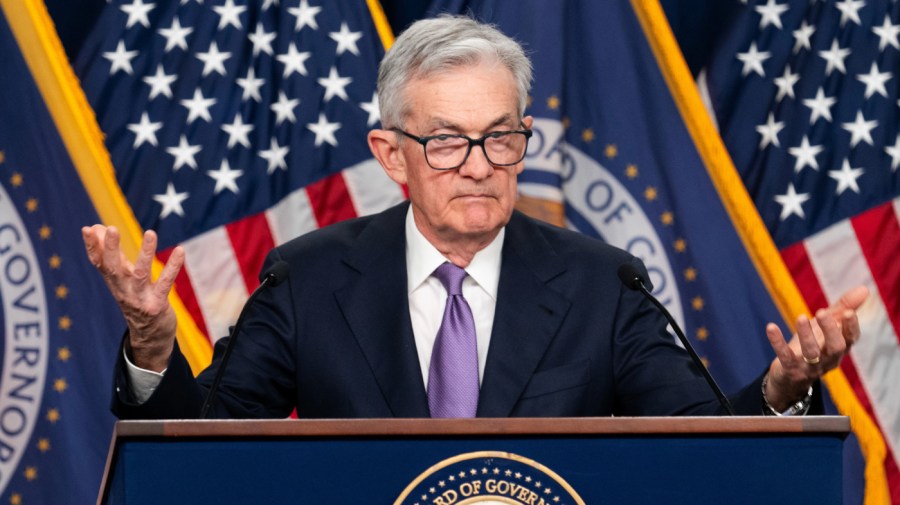
The Federal Reserve voted to keep interest rates at a 23-year high as inflation has edged up and the labor market remains strong, likely pushing potential rate cuts even later into the year.
Interest rates will remain at a range of 5.25 percent to 5.5 percent, where they have been since last July, the Federal Open Market Committee (FOMC) announced in a statement. While the Fed signaled in December it could start cutting rates this year, a majority of traders don’t anticipate the first rate cuts to come until November, according to the CME FedWatch Tool.
The FOMC, the panel of Fed officials responsible for setting monetary policy, hiked rates from 0 percent in March 2022 to their current level to curb pandemic-induced inflation. The Fed has since extended the runway for bringing rates down as inflation remains stubbornly sticky.
Inflation readings have ticked up since the start of the year. Prices were up 3.5 percent in March from a year ago, according to the latest consumer price index (CPI), moving away from the Fed’s 2 percent target.
“In recent months, there has been a lack of further progress toward the Committee’s 2 percent inflation objective,” the FOMC said.
The Fed has a dual mandate to keep inflation low and maximize employment, and the FOMC is not yet confident the economy is coming in for the rare “soft landing,” when the economy slows enough to bring down inflation without triggering a recession.
While many economists predicted a recession at the start of last year, the U.S. economy has proved remarkably resilient. The economy added 303,000 jobs last month, beating expectations, and the jobless rate has remained below 4 percent for the longest stretch since the late 1960s.
But gross domestic product (GDP) growth fell short of expectations during the first quarter of the year, slowing to a 1.6 percent annualized gain from blockbuster 4.9 percent annualized growth during the third quarter of 2023.
High borrowing costs have also weighed heavily on Americans.
The cost of buying a home has hit an all-time high, in part because of high mortgage rates and low housing supply.
Total household debt also hit $17.5 trillion in the fourth quarter of 2023, including $1.13 trillion in credit card debt, according to the New York Fed’s most recent Quarterly Report on Household Debt and Credit, which also showed delinquency rates for all debt except student loans were on the rise.
“The Fed’s high interest rates are exacerbating our housing crisis while doing nothing to tackle the high prices that remain. Meanwhile, sky-high borrowing costs have pushed household debt to an all-time high and delinquencies are rising,” said Rakeen Mabud, chief economist at the progressive Groundwork Collaborative and a former Treasury Department staffer.
“The Fed is failing families struggling to get by and failing to bring down inflation. Chair Powell should move to cut rates,” Mabud added.
The politically independent Fed has been under pressure from both sides of the aisle as it weighs when and if to cut interest rates.
Dozens of progressive Democratic lawmakers have called on the central bank to cut rates, noting the burden of high interest rates on Americans. Former President Trump, the presumptive Republican nominee who nominated Powell for the top job during his first term, accused the lifelong Republican chair of being “political” and suggested he would cut rates to benefit Democrats in the upcoming election.
Biden, who nominated Powell for a second term when he took office, is battling negative perceptions of how he’s handled the economy and inflation.
A recent CNN poll found 65 percent of voters said the economy is extremely important as they consider who they will vote for in the presidential election, up from 40 percent in 2020 and 46 in 2016. But Biden’s approval rate on the economy is just 34 percent, the poll found, and only 29 percent of voters approve of how he has handled inflation.
The CNN poll found Biden trails Trump by 6 percent, although an analysis of nearly 700 national polls by The Hill/Decision Desk HQ shows the incumbent is trailing his predecessor by less than one point.














